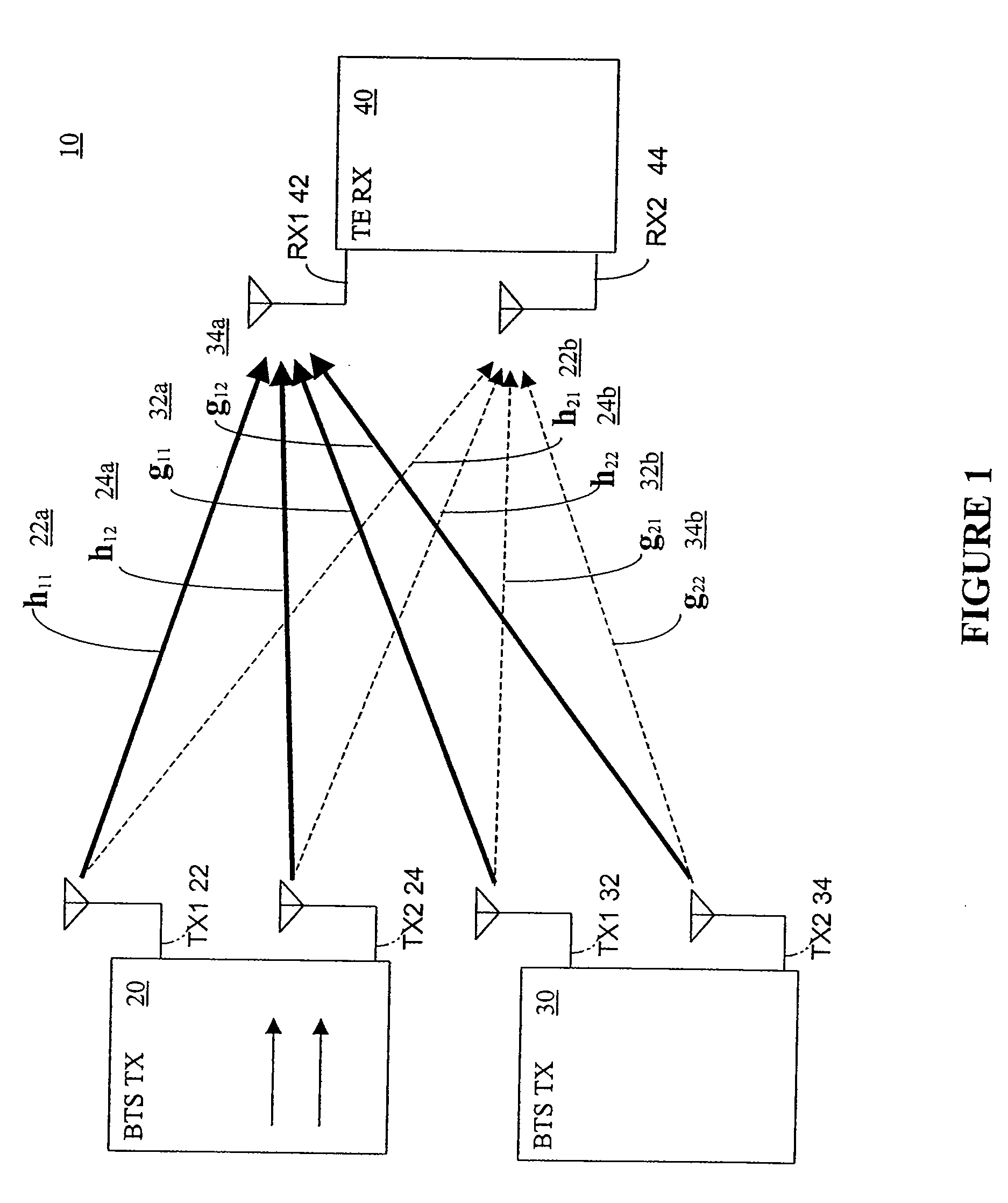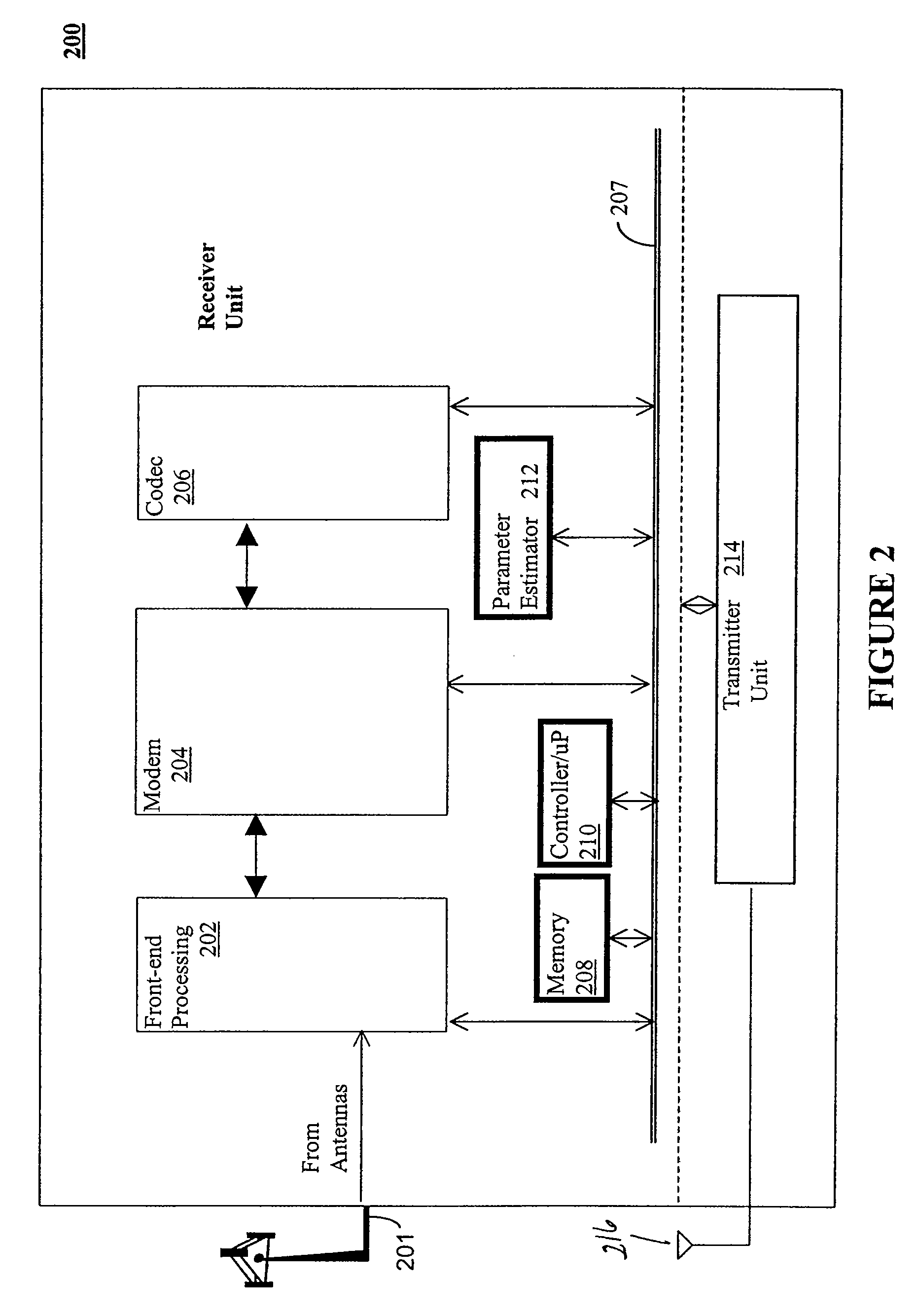CDMA wireless system
- Summary
- Abstract
- Description
- Claims
- Application Information
AI Technical Summary
Benefits of technology
Problems solved by technology
Method used
Image
Examples
Embodiment Construction
[0034]FIG. 1 is a schematic representation of apparatus 10 for use in practicing the invention. Apparatus 10 comprises at least first and second transmitters 20, 30 and a receiver 40. Transmitter 20 has at least first and second antennas 22, 24 for transmitting signals; and transmitter 30 also has at least first and second antennas 32, 34 for transmitting signals. Receiver 40 has at least first and second antennas 42, 44 for receiving signals. The characteristics of the signal path from the first transmitter to the receiver are represented by the value hij where i identifies the receiver antenna number and j identifies the transmitter antenna number. Similarly, the characteristics of the signal path from the second transmitter to the receiver are represented by the value gij.
[0035] The invention may be practiced using additional antennas and additional transmitters but the number of antennas at the receiver 40 must be equal to at least the number of transmitters.
[0036] As illustra...
PUM
 Login to View More
Login to View More Abstract
Description
Claims
Application Information
 Login to View More
Login to View More - R&D
- Intellectual Property
- Life Sciences
- Materials
- Tech Scout
- Unparalleled Data Quality
- Higher Quality Content
- 60% Fewer Hallucinations
Browse by: Latest US Patents, China's latest patents, Technical Efficacy Thesaurus, Application Domain, Technology Topic, Popular Technical Reports.
© 2025 PatSnap. All rights reserved.Legal|Privacy policy|Modern Slavery Act Transparency Statement|Sitemap|About US| Contact US: help@patsnap.com



